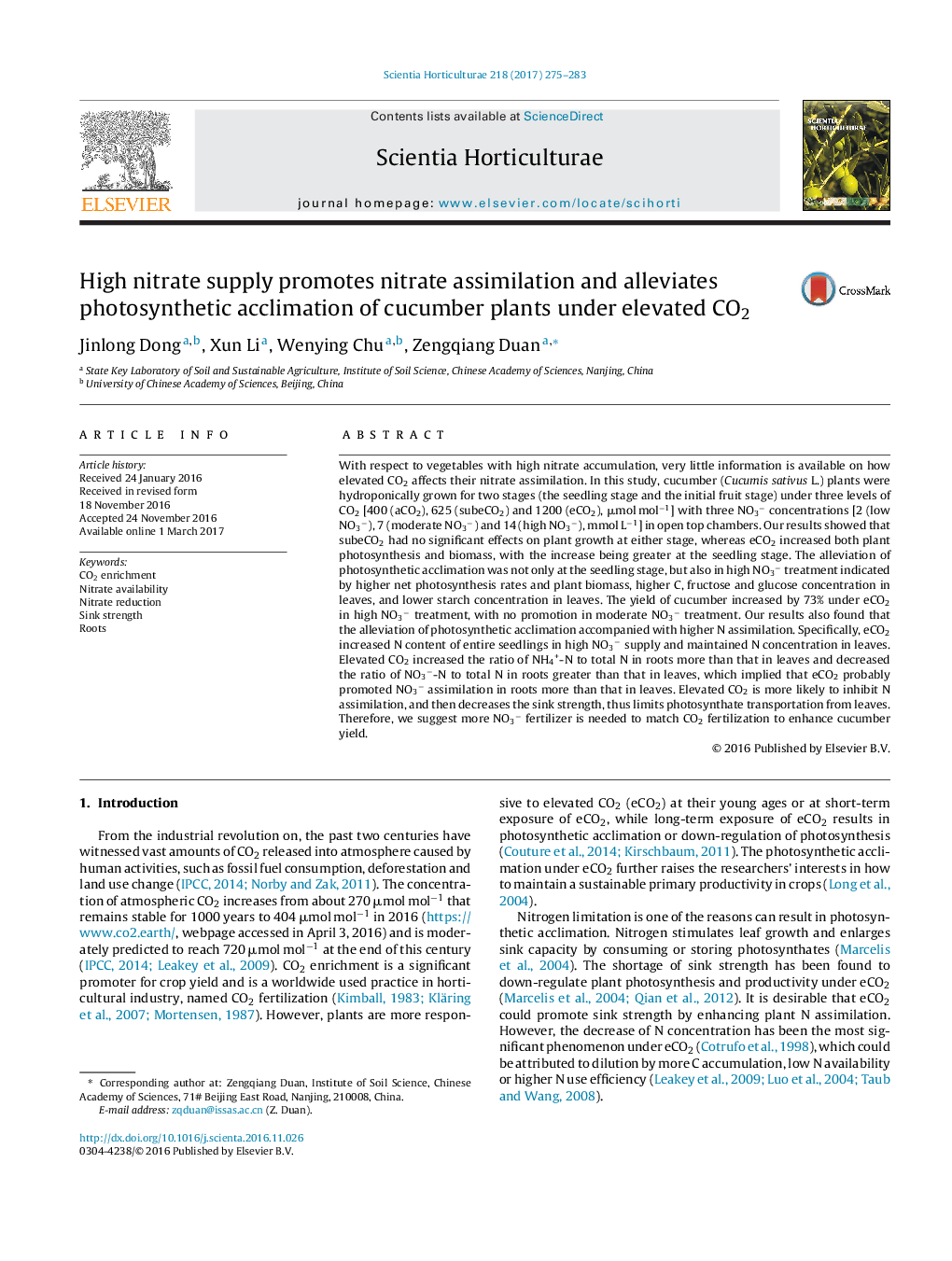| Article ID | Journal | Published Year | Pages | File Type |
|---|---|---|---|---|
| 5769554 | Scientia Horticulturae | 2017 | 9 Pages |
â¢Either long-term exposure of elevated CO2 (eCO2) or low NO3â availability resulted in photosynthetic acclimation in cucumber plants.â¢Elevated CO2 promoted NO3â assimilation of cucumber seedlings in high NO3â supply and alleviated photosynthetic acclimation.â¢There were tissue variations in NH4+ and NO3â accumulation between roots and leaves of cucumber seedlings in response to eCO2.â¢Elevated CO2 possibly inhibited N assimilation first, then limited the capacity of photosynthate transportation from leaves.
With respect to vegetables with high nitrate accumulation, very little information is available on how elevated CO2 affects their nitrate assimilation. In this study, cucumber (Cucumis sativus L.) plants were hydroponically grown for two stages (the seedling stage and the initial fruit stage) under three levels of CO2 [400 (aCO2), 625 (subeCO2) and 1200 (eCO2), μmol molâ1] with three NO3â concentrations [2 (low NO3â), 7 (moderate NO3â) and 14 (high NO3â), mmol Lâ1] in open top chambers. Our results showed that subeCO2 had no significant effects on plant growth at either stage, whereas eCO2 increased both plant photosynthesis and biomass, with the increase being greater at the seedling stage. The alleviation of photosynthetic acclimation was not only at the seedling stage, but also in high NO3â treatment indicated by higher net photosynthesis rates and plant biomass, higher C, fructose and glucose concentration in leaves, and lower starch concentration in leaves. The yield of cucumber increased by 73% under eCO2 in high NO3â treatment, with no promotion in moderate NO3â treatment. Our results also found that the alleviation of photosynthetic acclimation accompanied with higher N assimilation. Specifically, eCO2 increased N content of entire seedlings in high NO3â supply and maintained N concentration in leaves. Elevated CO2 increased the ratio of NH4+-N to total N in roots more than that in leaves and decreased the ratio of NO3â-N to total N in roots greater than that in leaves, which implied that eCO2 probably promoted NO3â assimilation in roots more than that in leaves. Elevated CO2 is more likely to inhibit N assimilation, and then decreases the sink strength, thus limits photosynthate transportation from leaves. Therefore, we suggest more NO3â fertilizer is needed to match CO2 fertilization to enhance cucumber yield.
